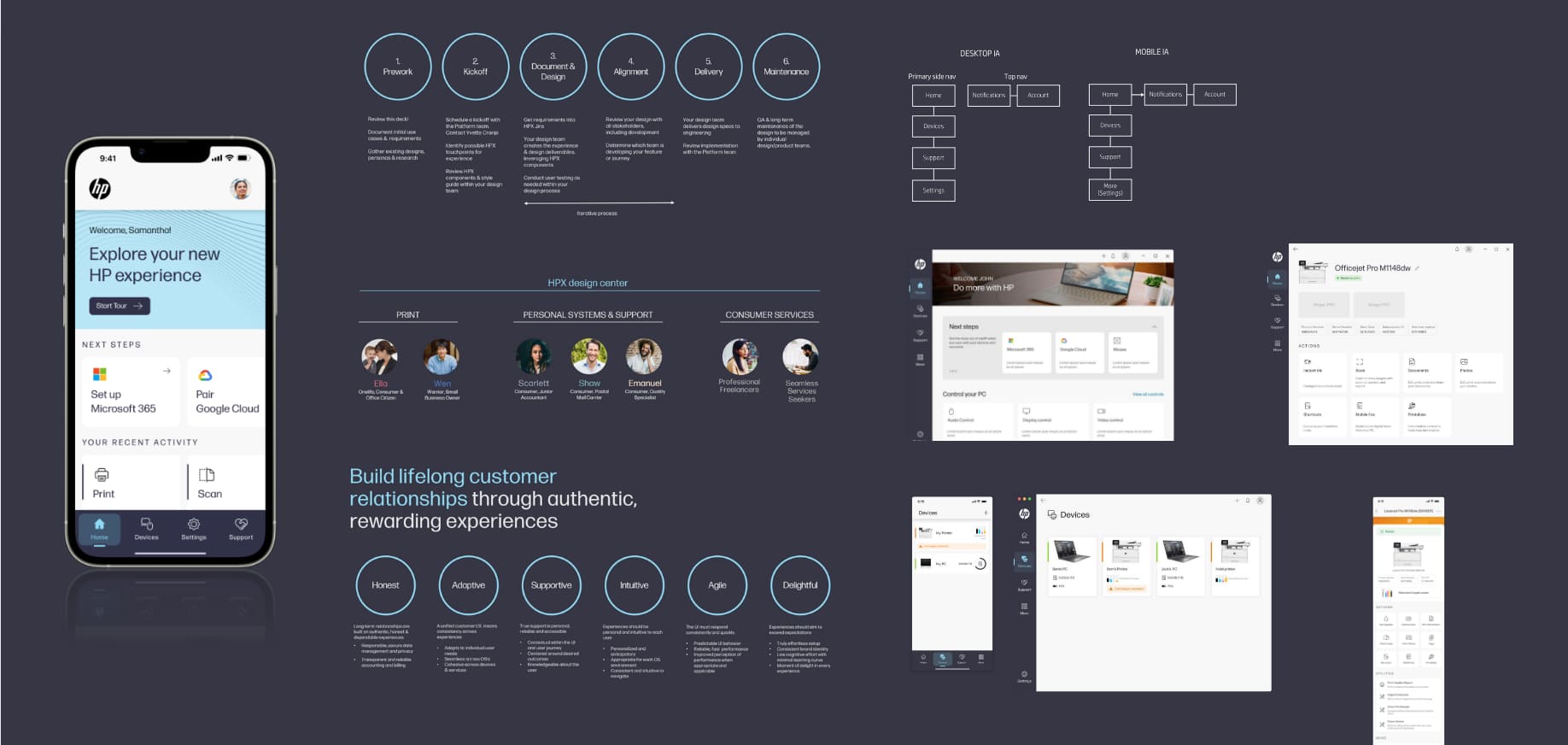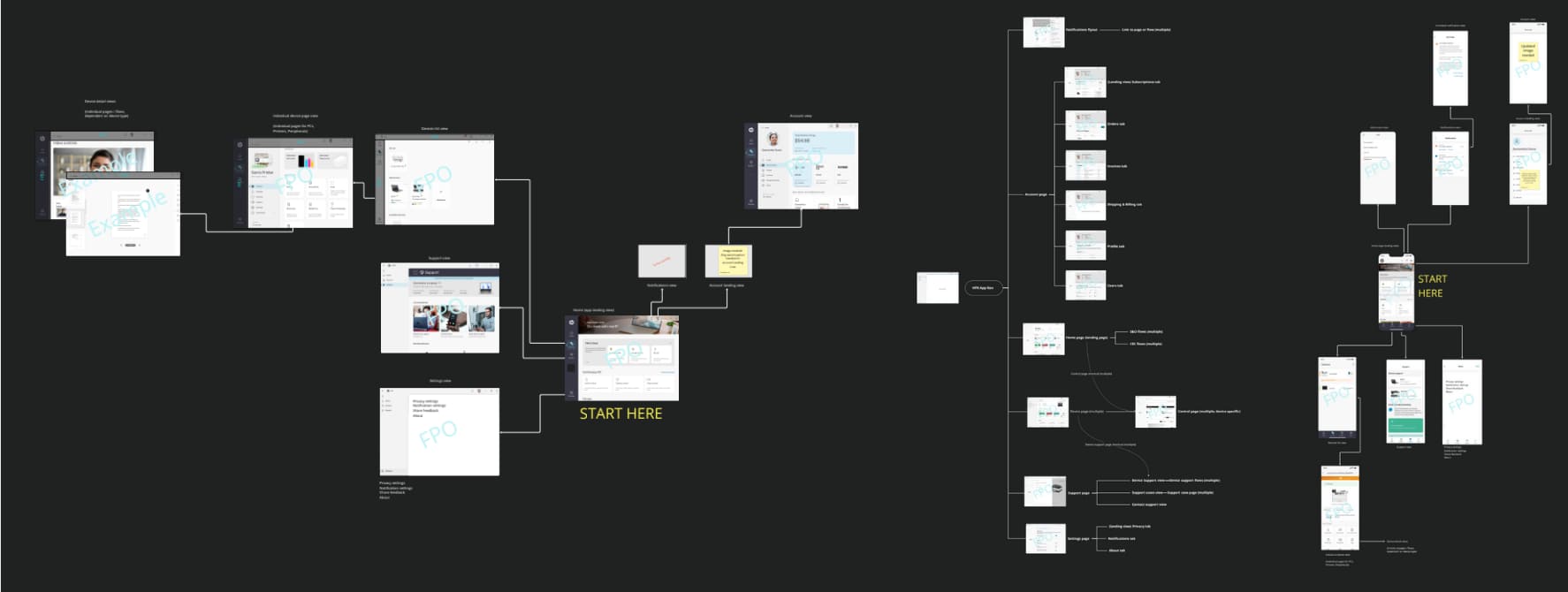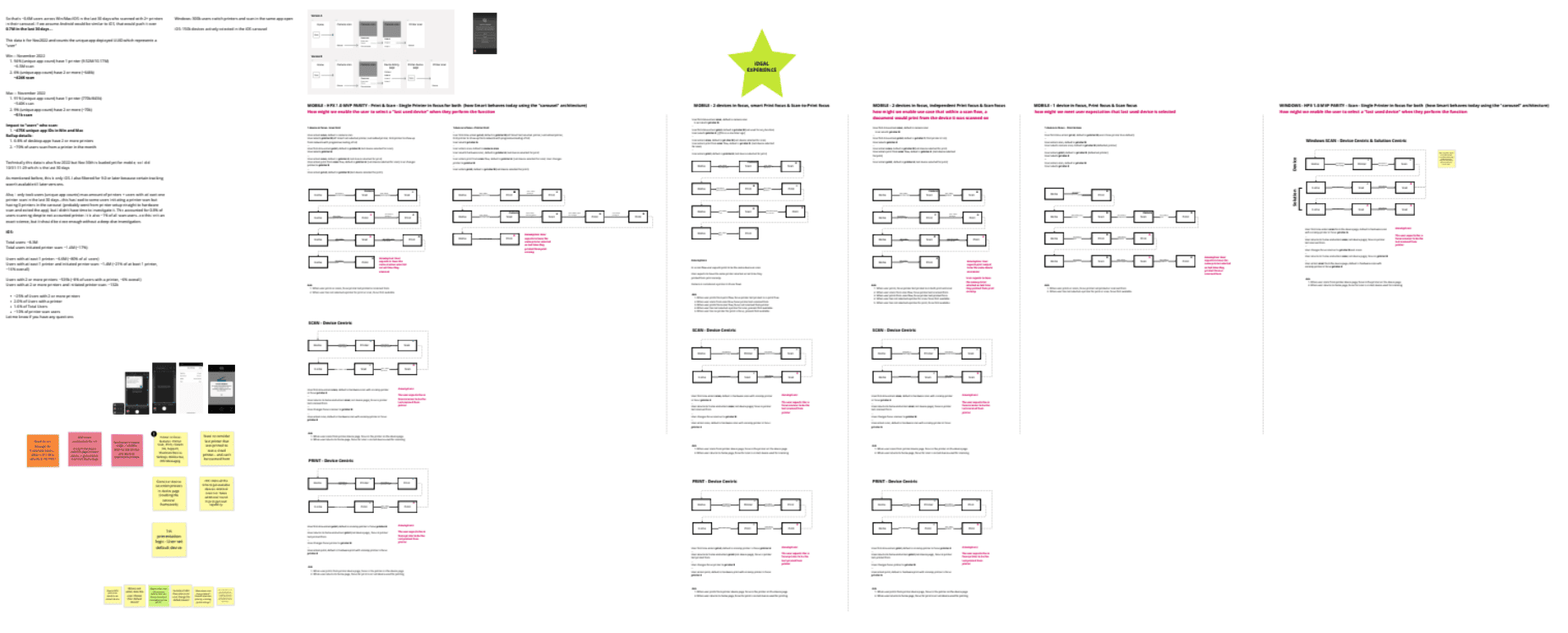
experience strategy for HP's first unified app
principal product designer and UX architect // design strategy • design leadership • UX vision • UX design • UI design • information architecture • design research
I led overall UX strategy for HP's first unified consumer and SMB software solution, overseeing and providing mentoship and guidane to multiple design teams and coordinating with stakeholders and partners across multiple global organizations. This innovative new app brings together HP's PC, printer, peripheral and support experiences all within one app for the first time, from onboarding and use to support and management. I led the UX strategy for the app, influenced product strategy and the creation of a new design system, mentored designers, and drove alignment and design excellence throughout all stages of the project. Ongoing collaboration and communicaiton with stakeholders and teams was key to shaping a cohesive, best-in-class, scalable product experience.
business goal
HP sought to create a world-class unified consumer app that consolidated a complex ecosystem of diverse product experiences currently managed by separate Personal Systems, Print, and Support organizations. The goal was to create a cohesive singular user experience, consistent across all major operating systems, streamlining the user journey and reducing complexity for users and administrators using and managing all HP products.
user experience goal
HP's new app needed to provide a cohesive, scalable cross-platform experience that considered the needs of diverse user segments, from individual consumers with PCs and printers, to SMB administrators managing multiple devices for entire offices. My primary goal was to ensure consistency and improve discoverability for users with multiple products, at home and at work, while creating an engaging, intuitive experience they would love using. My approach was to continually drive alignment across stakeholders and teams, to ensure buy-in and make sure all business and user needs were thoughtfully considered throughout the project.
design process
01/ discovery and initial alignment
I worked closely with product, engineering and design teams and leadership from PC, Print, and Support organizations to understand user needs and business objectives for all consumer and SMB segments. I organized and led multiple stakeholder and product team workshops to identify key user and business needs, pain points, and opportunities for improvement, as well as engineering and design workshops to align on technical constraints, design system strategy, and overall UI strategy. This ultimately led to the creation of an extensive, living UX strategy deck to ensure ongoing alignment across teams as the product direction continued to evolve.
02/ definition and exploration
The user-centered experience strategy I developed focused on key business initiatives and consistency of the user experience between multiple platforms and products. This UX strategy was the foundation for designing a unified information architecture, creating wireframes, informing the design system strategy, and ensuring the UI framework was cohesive across a range of device experiences and operating systems, while individual design teams worked on detailed flows for their products. Close collaboration with stakeholders and leads across all design and engineering teams was essential to maintaining alignment.
03/ validation and iteration
I led multiple rounds of iterative testing across all HP user segments to continually validate the UI framework and overall information architecture. This included surveys, tree testing, and usability testing of extensive prototypes to ensure ease of use across different platforms. The UX strategy was also informed by user tests of detailed experiences conducted by individual product teams. Based on user feedback and insights, I led the iteration of the IA and UI framework, and supported the design teams in refining overall discoverability and ease of use across app experiences.
04/ delivery and implementation
After aligning the design framework and architecture with stakeholders, I worked closely with design and engineering teams to deliver the foundational IA, UI framework, and base components for the HP app. I oversaw the design and delivery of individual experiences and flows for each business, ensuring alignment with the overall design system and strategy. This involved providing detailed design specs and guideline documentaiton, as well as maintaining constant communication with designers and developers throughout the delivery and implementation process.



